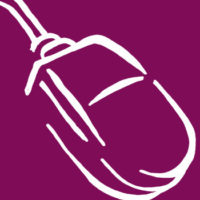Foreign material can be a difficult and costly issue in food manufacturing. The sources of foreign material seem to be endless, while the detection systems have limits and can be expensive. It has been common practice to use detection instruments such as vision systems, metal detection or X-ray units placed in-line to identify and remove contaminated product. The use of an integrated approach to preventing these hazards can prove to be the winning combination to eliminate foreign objects. This approach includes directed teamwork and oversight of preventive programs with employee training, as well as a risk-based approach to identifying hazards, complaint and internal incident data analysis and detection instruments.
A foreign object is material found in the product that should not be there. In 2016, there were numerous U.S. Food and Drug Administration (FDA) recalls linked to foreign objects involving top retailers and manufacturers. These recalls included metal from sugar in frozen meals, pieces of an ink pen lost in canned beans under numerous brand names and glass in mixed-fruit jars. These recalls cost companies in terms of added expenses, damage to consumer trust and reputation, and the time and resources to identify the issue and resolve it.
The most common foreign objects found in foods are plastic, glass, metal, wood, stones, insects and inherent materials. Inherent foreign objects are those that are part of a food but are intended to be removed during processing, such as seeds/pits, bones and stems. These are the undesirable parts of agricultural products that can cause harm or are not edible.
Types of Foreign Materials
Plastic is abundant in many manufacturing facilities. It can be found in packaging material, hand tools, conveyors, equipment parts and even in items carried or worn by employees. Many of the recalls for 2016 included issues that resulted from broken plastic in the product. With so many sources, it is easy to see how this is one of the most common foreign objects found in food.
Glass may be one of the hazards less often identified in food. It can cause severe injuries when ingested and results in a more traumatic experience for the consumer who has found it in their food. Glass is less common in facilities unless their products are packaged in glass. There have been many advances in shielding, coating and replacing glass components with other substances in food manufacturing plants.
Metal is also abundant in facilities. Many pieces of equipment and pipe-conveying systems are constructed of metal. Typically, metal contamination occurs when equipment is not operating correctly or when pieces are sheared or shaken off. X-ray or metal detectors can usually identify these foreign objects, but as detection comes at the end of the process, it is not the most efficient way to control contamination.
Wood is also a common type of foreign object identified in food processing. This hazard is typically not part of the equipment but rather is from pallets, heavy-duty crating material or environmental contamination caused during harvesting, if an agricultural commodity. This can be a difficult hazard to identify by X-ray detection.
The remaining mentioned common foreign objects of stones, insects and inherent materials are relatively expected in some ingredients due to their source, nature or processing method. These hazards are likely to be prevented during the initial processing through sieves, air separation or other methods.
How Foreign Materials Gain Entry
After understanding the forms and sources of foreign objects, we can see that there are numerous points of entry for foreign material. It is helpful to understand these sources to assess the risk to raw materials and finished products, as well as the environmental risks of foreign objects.
When developing an integrated approach to reducing and eliminating foreign objects, the first step should be to identify a team of multi-disciplinary personnel who can work together to facilitate change. We typically have Hazard Analysis and Critical Control Points (HACCP) and food defense-focused teams but rarely have specifically tasked foreign-object reduction teams. You may discuss physical hazards as part of your HACCP team, but a foreign-object reduction team should meet at a frequency relative to the level of incidence of these hazards and be focused solely on reducing them. Consider a wide-reaching team that includes line and sanitation supervisors. Their hands-on, day-to-day observations of the process and product can be priceless when identifying root causes. A facilitator must also be identified. By default, the quality manager will typically be the leader of this group, but other department leaders within sanitation or maintenance could also be appropriate choices.
Once the team has been identified, it can be very useful to gather and analyze relevant data. These data can be used to identify and target the main issues with foreign object occurrence. This step assumes that the facility has kept good records of incidence with both internal findings and failures, as well as consumer complaints. There are typical data points that are expected to be recorded; each complaint or incident should be logged with the production line, foreign object type and the production timing information, including shift and date of production. Once these data are collected and logged for all parameters discussed, it can be a great exercise to use Pareto charting to understand where to start your targeted team effort. This analysis uses the Pareto principle to help identify what top 20 percent of issues make up 80 percent of the problems. Graphing the incidence of a specific source of contaminant, specific product, specific line or other attribute can help direct the team’s activities to make great strides in reducing these incidences. These data should be revisited at a frequency that is relevant to the occurrence of data points logged. If a company has a large number of foreign object complaints or findings, it may need to reevaluate more frequently to see if progress is being made. It is also wise to keep a calendar of events affecting production. These events could include construction, new equipment installation, major maintenance activities, visitors or even new ingredient substitutions and product commercialization projects.
Programs to Reduce Contamination
After development of the main team and collection of all relevant data, an integrated approach to reduction of foreign objects includes development and implementation of preventive programs. This term will refer to those programs implemented to proactively reduce the introduction of foreign objects.
The first preventive program of importance is the vendor approval and monitoring program. A robust prevention program in the plant will not prevent the gaping hole that could occur at the receiving dock. Ingredients can be a key source of foreign objects, as they are the main input into the finished product. A subteam should be developed for this preventive program that should include your quality department, research and development, and your supply chain representatives. Vendors must be evaluated on many attributes, including the quality and safety of the ingredients provided. Conduct an internet search on the vendor and the raw material to find related recalls or hazards. Specific attributes related to foreign object control, investigation, corrective action and prevention programs should be part of a vendor’s evaluation. Armed with this information, one can understand the raw material and the inherent risks that may be associated with it, as well as evaluate the depth of the vendor’s preventive programs. All vendors should be working as hard as you to reduce and eliminate foreign objects. Develop certificate of analysis verification programs that include the physical attributes and inspection for foreign hazards that are relevant and appropriate.
Additional preventive programs that must be established include training. All employees must be trained in aspects ranging from understanding the sources of foreign materials to understanding the hazards that exist in the products being produced. Employees should be able to connect how the above-mentioned sources can be found in the products they are producing. They must be aware of potential contamination sources within the plant and how to prevent them. The training should include how contamination events can lead to a higher incidence of foreign objects. A review of products and foreign object data should be done annually, at a minimum, with all employees.
Another important preventive program is a plant inspection. This can be focused on foreign objects alone or combined with the overall existing inspection program. As many team members as possible should attend these walks. The more cross-functional and heavily attended these walks, the more progress can be made in reducing potential foreign object contaminants. The inspection can be directly focused on a line or product that is showing higher levels of frequency for foreign object contaminants or on the plant in general. This would be a great place to apply the data from the discussion above. If the team has been briefed on the data, it will make their task more focused and productive. A specific line or product can be targeted from these data for review, including the raw materials, equipment, process or even the employees that applied inputs to the highest incidence of foreign objects in finished products. If the preventive programs for training and vendor approval are robust enough, the remaining culprit might be the equipment or the process. All equipment should be inspected for points of contamination. Maintenance, production and sanitation can all provide insight in these areas. Maintenance can discuss the activities, both preventive and reactive, that are completed on specific equipment. This information could be helpful in identifying recurring issues. Production uses the equipment and follows the process. This team spends the most contact time with the product. When viewing the process, product and equipment from a different perspective, production may be able to provide valuable insight into the causes of foreign object contamination. Sanitation sees the equipment in a very different way as well. Sanitation may include taking the equipment apart, which could allow for additional inspection points that are not readily accessible.
A glass and brittle-plastic program may also be part of the preventive programs for reducing and eliminating foreign objects. This would include an inventory of all items, fixtures, equipment or small tools that are made of brittle plastic or glass. After taking an inventory of all of these items, an inspection program should be implemented to ensure that they remain intact. In addition to proactively inventorying and inspecting these items, there should be a documented process for cleaning up and containing a breakage, if one should occur. This program should include steps to protect the product from any potential contamination and disposal of any contaminated product. This information should be documented to allow for a cross-reference point if a larger issue is found on that day with that product in that area of the plant.
Analysis and Corrective Actions
The investigation and corrective action program in the plant must also be robust and effective. Problems will arise that will need investigating. It is important to have a culture of contributing to solutions rather than hiding problems. Consider sharing specific details of the foreign object finding or complaint with the plant operations and support teams. Allow the line employees to give feedback on potential sources, causes and solutions. Production line employees can provide tremendous insight. When an issue arises, it should be investigated down to a root cause that can be used to prevent that issue in the future. With the Pareto analysis, we can also see where the failures have been. The data provide a storyboard of what is occurring, while the corrective action program implements changes in the storyboard. It is important to detail investigations and solutions thoroughly, so that if future issues arise, the solutions can be reevaluated for effectiveness.
Operationally, there may be processes, equipment or inspection points that can be added to reduce the foreign object contaminants in the finished product. This is not a new idea: Many bakeries have sifters in-line from their flour tanks, for example. These inspection points provide important data relevant to occurrence and source. A process may be added to eliminate foreign material. This could be mechanical separation methods that lift or remove foreign contaminants. This may have been a quality process in the past but can now provide new, innovative ideas for the prevention of foreign contaminants. Additionally, equipment that specifically targets foreign material earlier in the process may be installed to remove contaminants.
Detection instruments should not be relied upon to prevent foreign objects but rather as the last line of defense in the integrated approach to prevent foreign object contamination. Detection devices must be relevant to the contaminants that may be present, the product and the process. Typical detection instruments that are most frequently seen are screens, metal detectors and X-ray units. These are very useful tools but should not be the only defense against potential contaminants. They can provide additional data points. Every finding should be logged with a root-cause analysis performed to prevent issues in the future. These findings should be shared with all relevant teams as well.
Foreign objects continue to be a large problem for food manufacturers. We see the effects in the many costly recalls related to foreign objects. The sources of foreign materials are limitless, and it may seem impossible to identify them and prevent them from contaminating your product. An integrated team approach with many facets could provide the right approach to prevent and potentially eliminate all foreign material hazards from food manufacturing. It has been said that wherever focused initiatives to drive change are applied, those initiatives produce results.
Natasha Rowley-Phipps works in quality food management at ACET Global Consulting LLC.
Foreign-Material Reduction Programs—An Integrated Approach Using Teamwork




